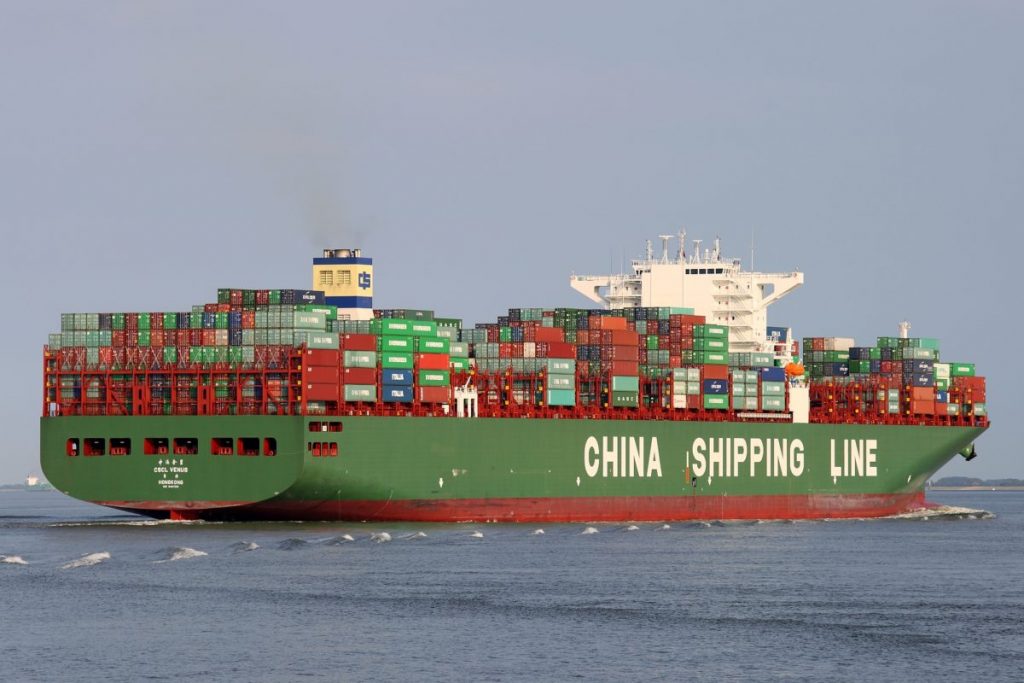Washington ~ President Trump called Chinese President Xi Jinping on Monday to express disappointment that the US trade deficit with China is increasing, stating that it is not sustainable.
The CPA Fact Sheet below explains the problem.
Seven Things to Know About the US-China Trade Problem
1. A New US-China Trade Deficit Record Will Be Set In 2017
CPA forecasts that the US-China trade deficit will hit a new record of $376 Billion in 2017. That will be an 8% increase over the 2016 level. It will also set a new record not only for the US-China deficit, but for any US trade deficit with any other single country at any point in American history.
2. The US-China Deficit is Nearly Half Our Overall Trade Deficit
The United States’ trade deficit with China has been the largest single contributor to the United States’ overall trade deficit for years. In 2016, the US-China bilateral goods trade deficit came in at $347 billion, or 46% of the total US goods trade deficit of $753 billion. (All figures come from US Bureau of the Census reports and refer to deficits in goods.) Ten years earlier, in 2006, our China trade deficit was “just” $234 billion, or 28% of our total goods trade deficit. While our total goods trade deficit has remained in the $700B-$850B range (about 4% of our GDP), our US-China trade deficit has marched steadily upwards as a share of both our total trade deficit and our GDP, as China takes a larger share of US domestic markets, driven by Chinese government policies that favor overproduction and export and discourage Chinese imports. The Chinese government recently reported that its total 2017 trade surplus was $423 billion.
The graph below shows the persistent growth of the US-China trade deficit in dollars (blue line) and as a percent of the total US goods trade deficit (red line).
 Source: US Bureau of the Census
Source: US Bureau of the Census
3. The Problem is Unique to America
Other industrial nations with strategic trade, not free trade, policies have been successful at blocking China’s unfair practices. Relatively high wage Japan, Germany and South Korea have trade surpluses with China. Those countries also have large surpluses with the US. In other words, they overproduce, under consume and export their overcapacity – and their unemployment – to America.
Bilateral Surplus/Deficit with China 2017 (US$)
| US | -$250.6B |
| Japan | +$16.4B |
| Germany | +$20.9B |
| South Korea | +$65.3B |
Source: China Ministry of Commerce
4. The US Dollar is Overvalued
The US dollar continues to be overvalued in relation to its trade balancing equilibrium price, despite recent declines. The dollar misalignment in relation to the renminbi is a substantial factor driving our trade deficit with China and the world. One reason Japan, Germany and South Korea have surpluses with China is that their currencies are undervalued in relation to China, as well as the US. The Trump administration needs to focus more upon exchange rates in relation to trade than it has so far.
5. China’s “State Capitalism” Economy Generates Enormous Unfair Trade Practices
China has used a broad range of unfair trade practices to drive its export growth and restrain imports. Those practices include: deliberate undervaluation of the Chinese currency; government subsidy of export industries worth many billions of dollars; taxes and other restrictions on imports; requiring foreign companies to transfer proprietary technology to Chinese partners with little or no compensation; and more.
Most of these practices violate US law and/or World Trade Organization rules on international trade. Although this year is less than one month old, the US International Trade Commission has already found that China violated free trade rules and caused material damage to US companies in the aluminum sheet industry, sodium gluconate chemicals, and cold-drawn steel tubing.
According to the WTO website, the United States has more cases outstanding against China in that body’s tribunal process than any other of the WTO’s 164 members:
US WTO Complaints Against Member Trade Practices
| China | 21 |
| European Union | 19 |
| Canada | 7 |
| India | 6 |
| Japan | 6 |
| South Korea | 6 |
| Mexico | 6 |
6. The “Free Trade” US is 65% of China’s Global Trade Surplus
China’s US trade surplus accounts for a staggering 65% of China’s total trade surplus, according to 2017 data from the Chinese Ministry of Commerce. With weak US enforcement of trade law and our political leaders’ willingness to surrender entire industries to Chinese suppliers (often with the support of US multinationals), the United States is enabling and supporting China’s policy of using unfair trade practices and export promotion to industrialize China at a rapid pace, acquire dominant positions in many critical industries and export unemployment to the US. As a rule of thumb, each $1 billion on our trade deficit represents about 6,000 lost US jobs, so the 2017 China deficit represents some 2.2 million lost US jobs.
7. The Shrinking US Industrial Base
Chinese imports, and unfair policies restricting US exports to China, have hit the US hard in many major industries that once employed hundreds of thousands of Americas and represented US competitive leadership. A sustained, strategic effort to rebuild our industrial base is necessary. Here are the industries accounting for the largest share of US imports from China, with the change from a decade earlier.
| Industry | US Imports from China 2016 (US$) | Change from 2006 |
| Computers and Electronic Products | $163.8B | 66.9% |
| Electrical Equipment, Appliances | $ 42.6B | 94.8% |
| Machinery, except Electrical | $ 31.8B | 75.6% |
| Apparel and Accessories | $ 31.5B | 33.2% |
| Fabricated Metal Products | $ 22.3B | |
| All Commodities | $481.6B | 57.5% |













